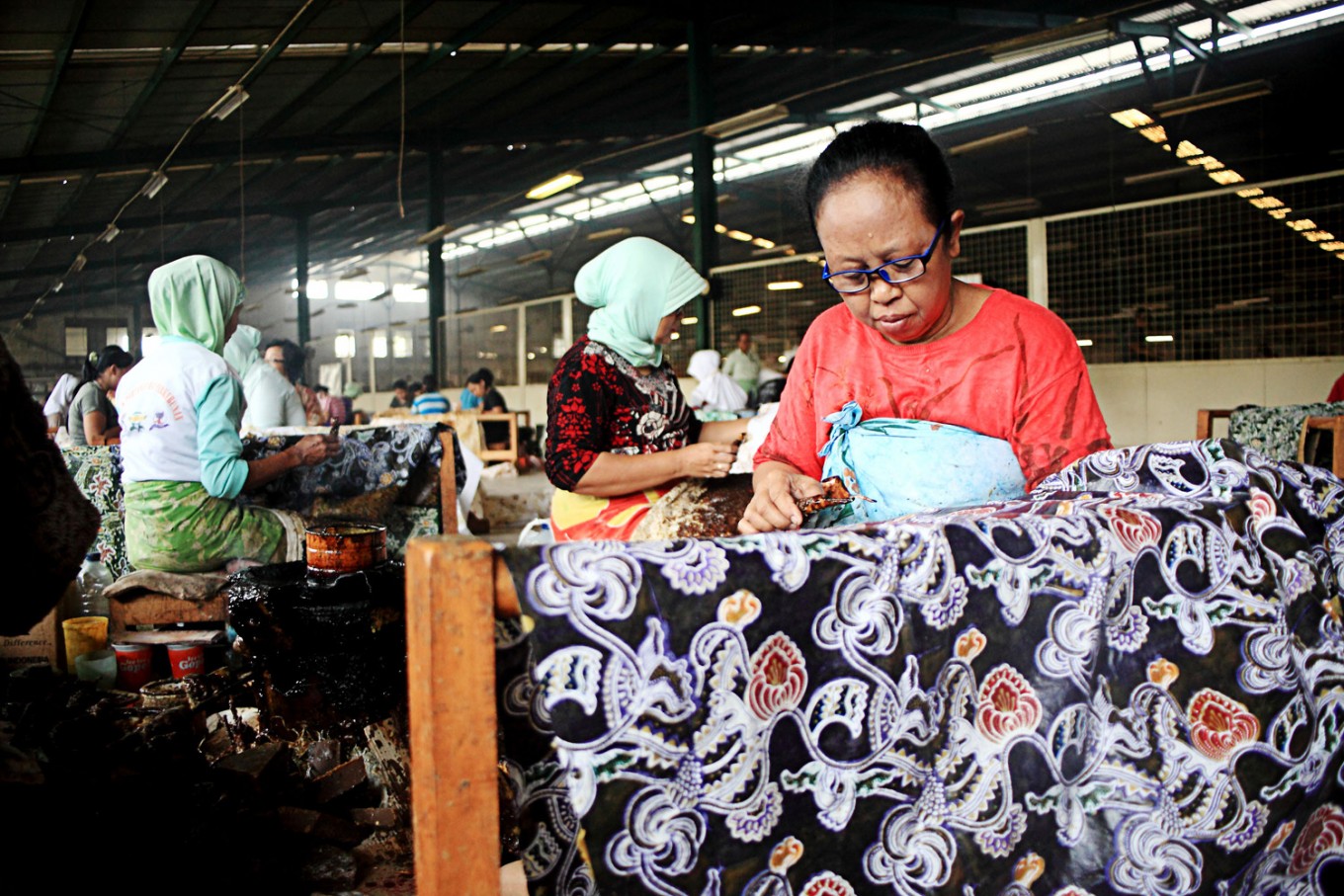Popular Reads
Top Results
Can't find what you're looking for?
View all search resultsPopular Reads
Top Results
Can't find what you're looking for?
View all search resultsEco-friendly batik developed in Surakarta to reduce river pollution
Batik manufacturers in Laweyan, a heritage center in Surakarta, Central Java, are developing environmentally friendly batik to reduce river pollution in the city.
Change text size
Gift Premium Articles
to Anyone
B
atik manufacturers in Laweyan, a heritage center in Surakarta, Central Java, are developing environmentally friendly batik to reduce river pollution in the city. Two rivers cutting through Surakarta, namely the Jenes and the Wingko, are polluted and one of their biggest polluters is the batik industry in the Laweyan areas located along the two sides of the rivers.
“In the past year, we have developed naturally dyed batik in Laweyan. We are replacing chemicals previously used to color batik with natural dyes, which are more environmentally friendly,” Kampung Batik Laweyan Association head Alpha Fabela Priyatmono said on Monday.
Alpha said natural dyes would help batik producers to reduce waste, which had polluted the Jenes and Wingko rivers for the last few years. Of about 300 batik manufacturers in Laweyan, 200 of them had turned to natural colors to dye their cloth.
Alpha admitted the batik industry in Laweyan was still using artificial colors and throwing the waste into the rivers. Many batik manufacturers were forced to do that because there was only one waste water treatment plant (IPAL) at Kampung Laweyan. With 300 batik producers, Laweyan needs around three to five IPAL facilities.
“One IPAL can accommodate only 30 percent of total waste produced by the industry. The two rivers eventually become the one and only choice for where the batik manufacturers can throw the waste water. Five years ago, we requested additional IPAL facilities from the Surakarta administration, but they have not yet been provided,” said Alpha.
Explaining further about the use of natural colors, he said batik manufacturers in Laweyan had received training on energy innovations and naturally colored batik dyeing techniques. They used natural materials such as leaves and tree bark for batik coloring.
“For natural dyes, we use morinda [locally known as mengkudu], turmeric, jati [a kind of hardwood tree] leaves, tea leaves, tree bark and much more. We can easily find the natural materials around us,” said Alpha.
He said the environmentally friendly batik program still needed to be supported with the development of new IPAL facilities, despite the growing use of natural dyes. This was because natural batik dyes would still produce waste, which needed treatment plants.
“It’s true that natural color waste will not disrupt the ecosystem of a river, but the color of its water will change, making it look dirty,” said Alpha.
 Natural color – A worker in the batik industry in Kampung Laweyan in Surakarta, Central Java, colors sheets of cloth using natural dye. Manufacturers in Laweyan are developing environmentally friendly batik to reduce river pollution. (thejakartapost.com/Ganug Nugroho Adi)
Natural color – A worker in the batik industry in Kampung Laweyan in Surakarta, Central Java, colors sheets of cloth using natural dye. Manufacturers in Laweyan are developing environmentally friendly batik to reduce river pollution. (thejakartapost.com/Ganug Nugroho Adi)
A batik businessman in Kampung Lawenan, Gunawan Nizar, shared similar concerns. He said that all this time the batik industry in Laweyan had struggled alone to reduce environmental pollution. Many batik producers did not even care about the business risks they might face for shifting from artificial colors to natural dyes.
At first, Gunawan said, many batik manufacturers lost their customers as they were not yet familiar with naturally colored batik. Until now, many manufacturers in Laweyan had to explain about naturally colored batik to new customers.
“Initially, we suffered significant losses because our sales declined by about 30 percent, but the situation is getting better now,” said Gunawan.
Surakarta Environmental Agency head Widdi Srihanto said separately that Kampung Batik Laweyan needed two to three communal IPAL facilities to process batik waste. However, he said, the Surakarta administration’s plan to build new IPAL facilities in the area was hampered by land problems. Laweyan, the batik home industry, was located in a crowded settlement area; thus, it was difficult to find empty land where the IPAL could be located. (ebf)










